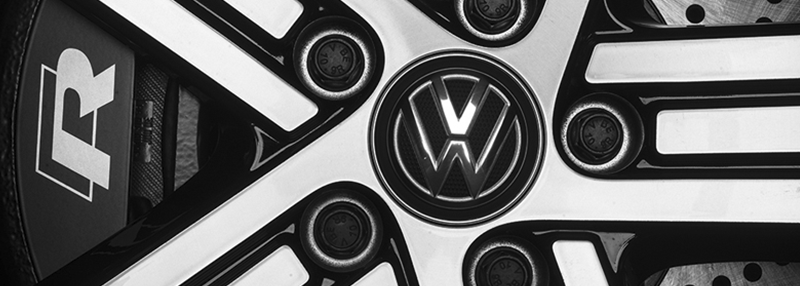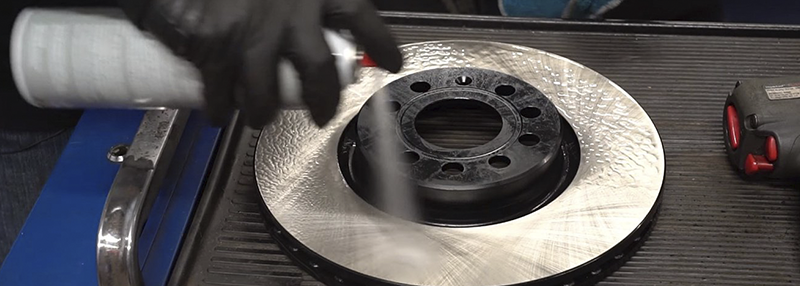Mechanics 101: Brakes and Rotors
Mechanics 101: Brakes and Rotors
Stop. Look. and Listen!
Perhaps one of the most important functions of your vehicle — the brakes — represents an area that you should remain vigilant and watchful for when it comes to their replacement and repair. They serve a vital function and like many aspects of your vehicle, experience wear over time. It is in every driver’s best interest t ensure they are functioning properly. There are signs to look for and timing is everything.
Their specific role
Considered one of the most important parts of your vehicle, brake pads serve a crucial component by creating the friction that assists in stopping your car when they are pressed against the brake disk, also known as the brake rotor. In some cars, it is also referred to as the brake drum that rotates with the wheel. Brake pads are made of a variety of materials, including metallic, organic, ceramic or composite. By nature of their composite, they eventually wear thin, meaning they can no longer generate the heat caused by friction as effectively and thus decreasing the ability to stop the vehicle quickly and potentially increasing the distances required to do so. Eventually, they wear out completely, which causes many issues.
Anytime you notice that your brakes simply are not working as they should, it could mean the time has come for their replacement. Be watchful and aware!
Contributing factors
While brake pads and rotors wear out eventually on any vehicle, the timing of their wear and replacement all vary based on contributing factors. Those include one’s driving habits, meaning how hard drivers push their brakes, how often they ride their brakes and how many abrupt stops they make, as well as environmental conditions. Those conditions involve driving in mountainous areas with steep elevation changes that can wear brakes out quickly as well as city driving, with stop-and-go traffic that is harder on brakes. Other factors involve the differing compounds that make up brakes and contribute to brake pad hardness. This means that hard compound brake pads last longer and soft compound brakes perform better at lower speeds, like in urban areas. Also, too much heat can melt pad compound onto the brake rotor and reduce brake performance over time if the driving becomes too extreme.
Lastly, the materials that make up the brake rotor and brake pad also factor into the brakes’ longevity. For example, carbon-ceramic brakes last longer than standard metal brakes but need to be warmer than the alternative to be effective. Steel or metal brakes are more common than carbon-ceramic brakes and are found almost exclusively on high-performance sports cars, and suit a variety of driving conditions.
A general rule of thumb is to replace brake pads after approximately 50,000 miles, although some need replaced after 25,000 miles and others can last for 70,000. It is important to consult your owner’s manual to better determine your vehicle’s specific needs.
The warning signs
There are certain warning signs that serve as an alert that it is time to have your brakes serviced and/or replaced. Those include squealing or scraping noise that happens when your brake pads are about to run out of the grippy material they are comprised of. This is a sign to immediately replace them. Jittery braking is another telltale sign that will occur when the rotors have become warped. Some remedies can either clean or grind down the surface of the rotor in order to make it flat again, but most times, it is easier and more cost efficient to just replace them. Grinding or growling is another warning sign that indicates that your brake pads are most likely worn down completely. This sound is caused by the two pieces of metal rubbing together. Vibration is also another symptom of warped rotors and an indicator that your vehicle is out of alignment. Warped rotors are the result of severe braking for long periods of time, such as when traveling down a steep mountain or when towing.
Not just listening, but looking for warning signs is also of great importance. It is vital to check out the wear on disc brakes by observing the spaces between the wheel’s spokes. The outside pad is positioned against a metal rotor. The general rule of thumb is that there should be at least 1/4 inch of pad. If you observe less than that, you may want a mechanic to inspect or replace your brake pads.
Another warning sign involves a reduce in responsiveness of your brakes or fading. This is made clear when your pedal “sinks” to the floor and is a clear indication of a leak in the braking system. Also, if your vehicle pulls to one side when braking, that may be a sign of wear of the brake linings or that there is a foreign matter in the brake fluid. This may be time for a brake adjustment or to have your fluid drained or replaced.
By paying attention to these signs and the overall condition of your brakes, you will avoid big repair bills, or even an accident, down the road. Unfortunately, this is something that is far too often overlooked. Brakes are the most important safety system of your vehicle and their care is paramount. Brake pads are what gives your car the ability to stop by applying friction against a metal disk or drum that halts the vehicle. It is what keeps drivers safe from accidents while giving them the ability to stop at a moment’s notice. If drivers cannot stop, an accident will most likely result. Be aware of pulling, squeaking, vibrations and the presence of thin brake pads.
Remember, this is not about aesthetics — but safety. Stop. Look and Listen. Make sure your brakes are in proper working condition at all times!


